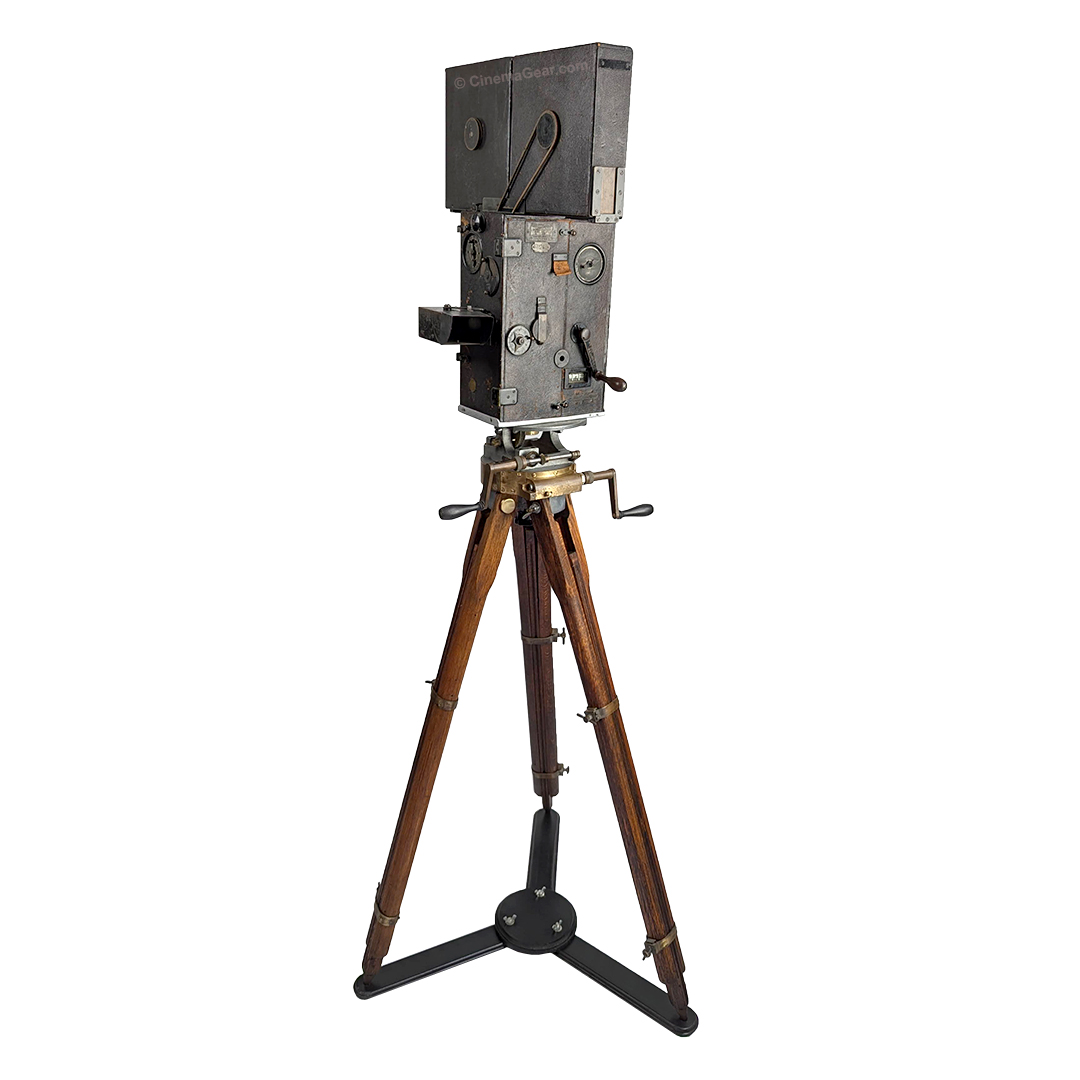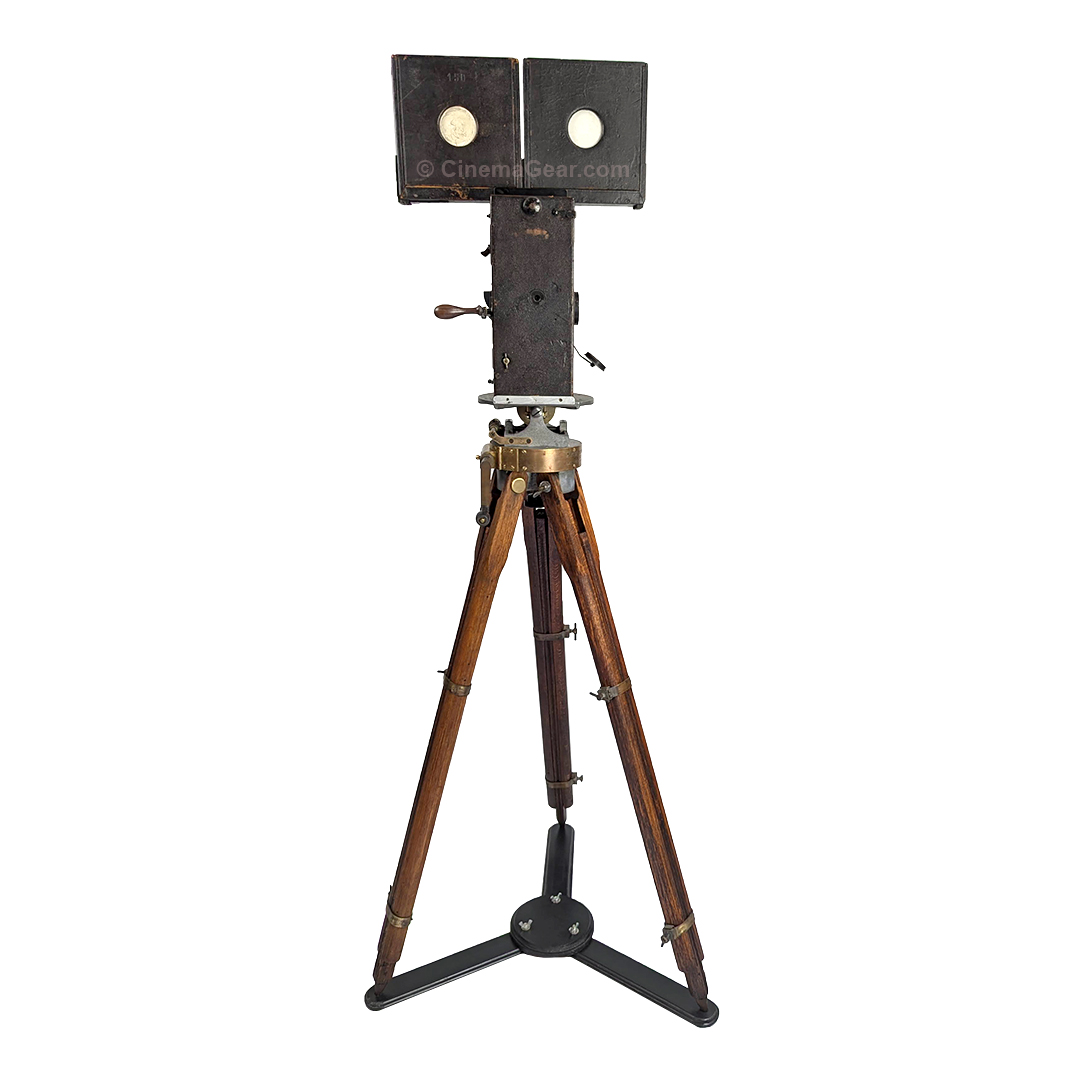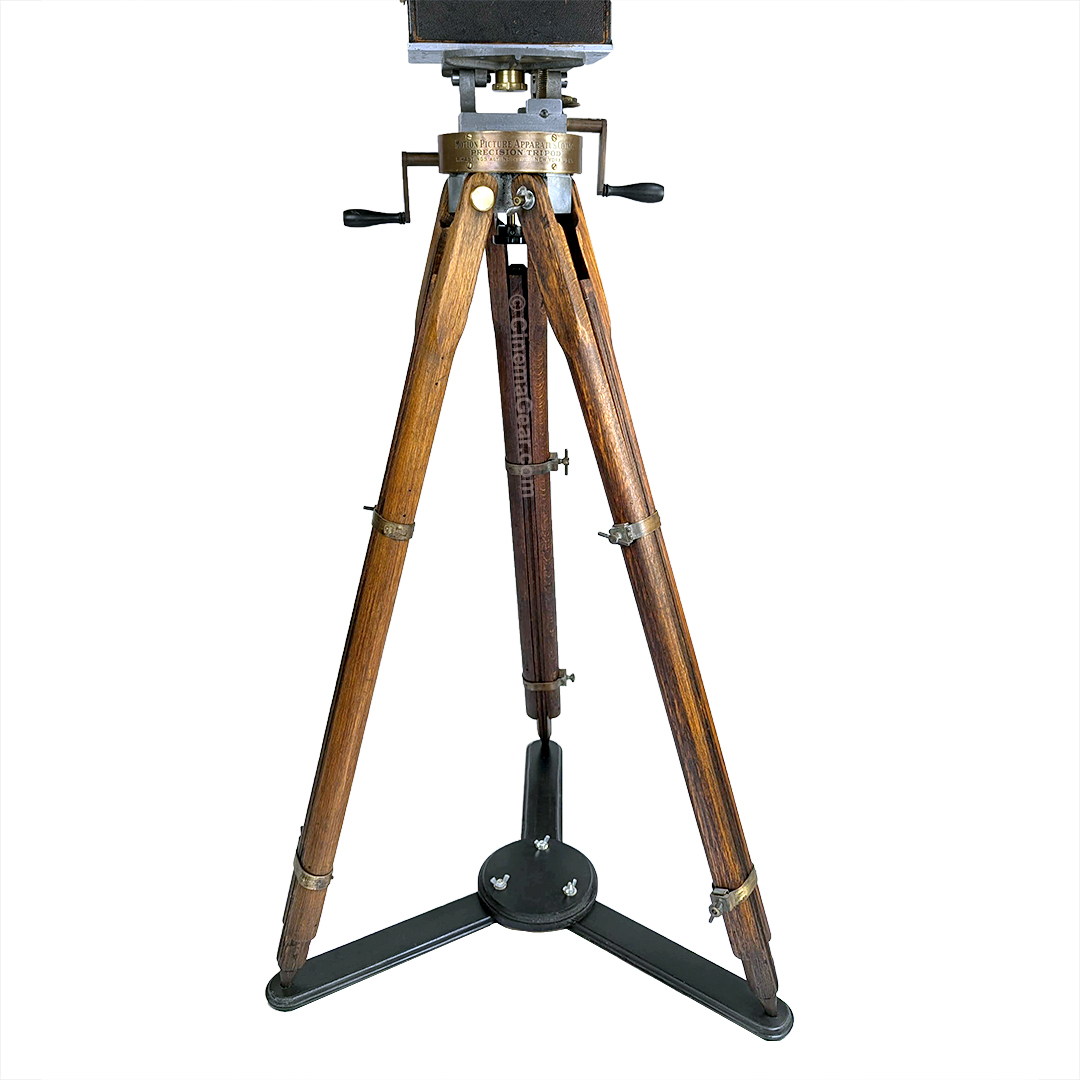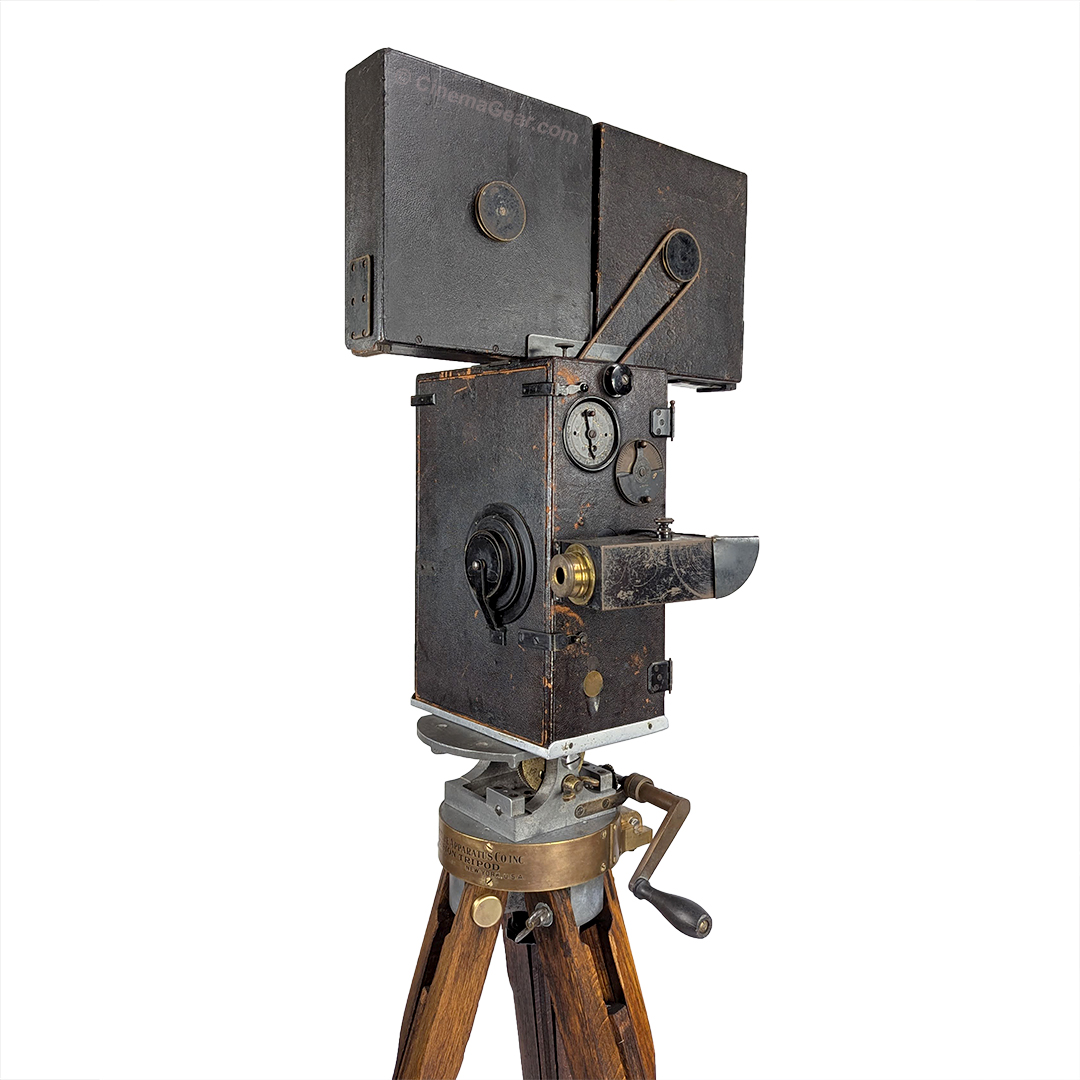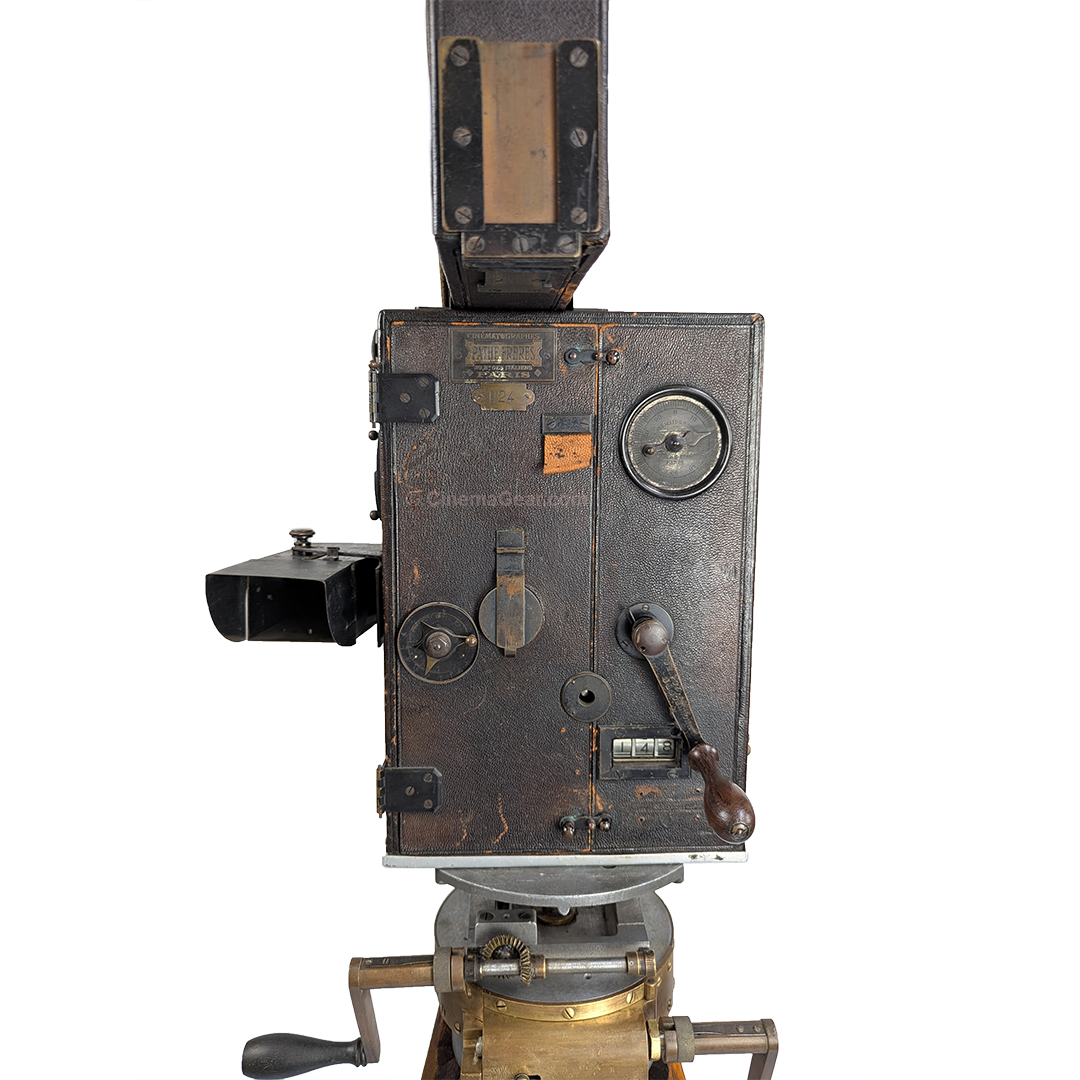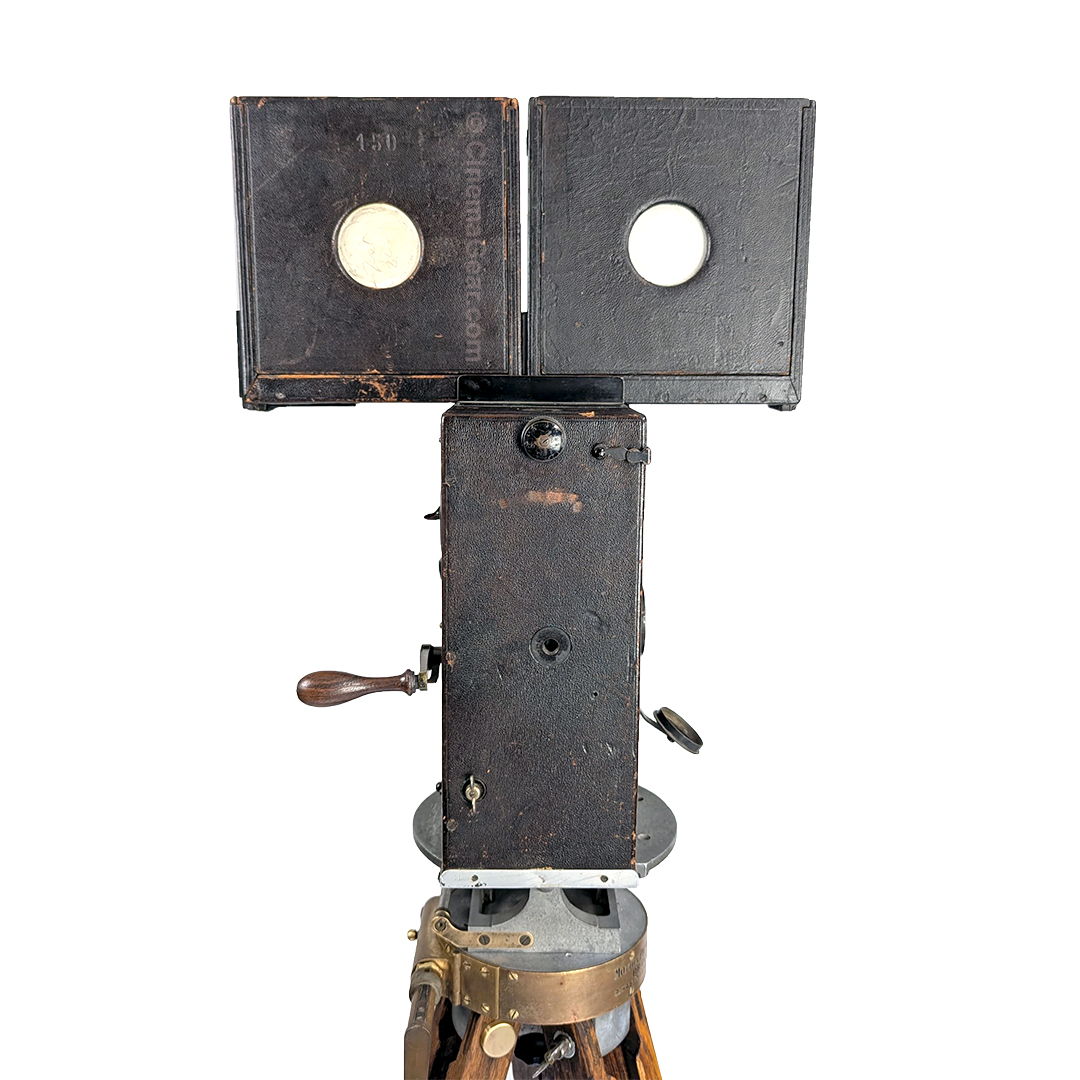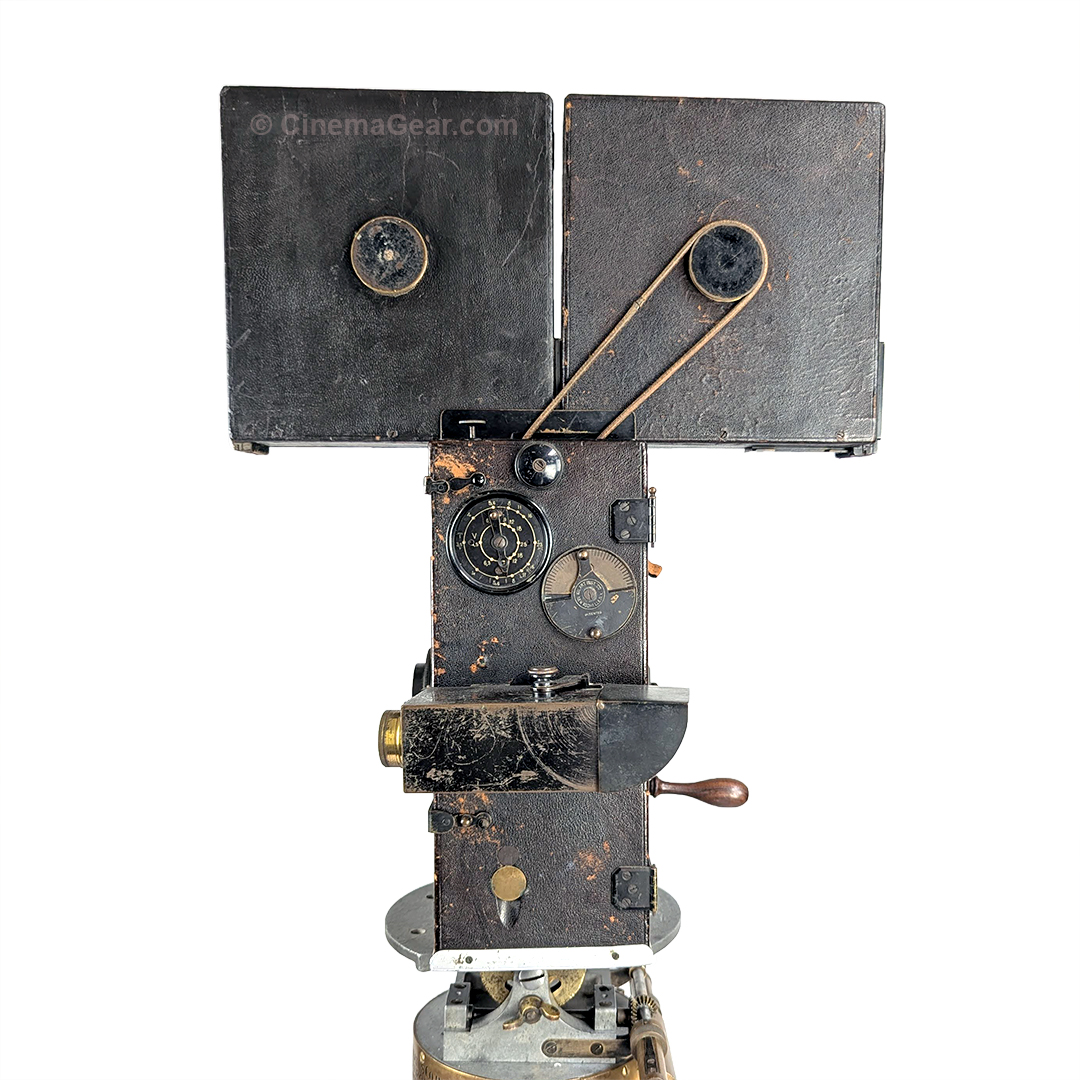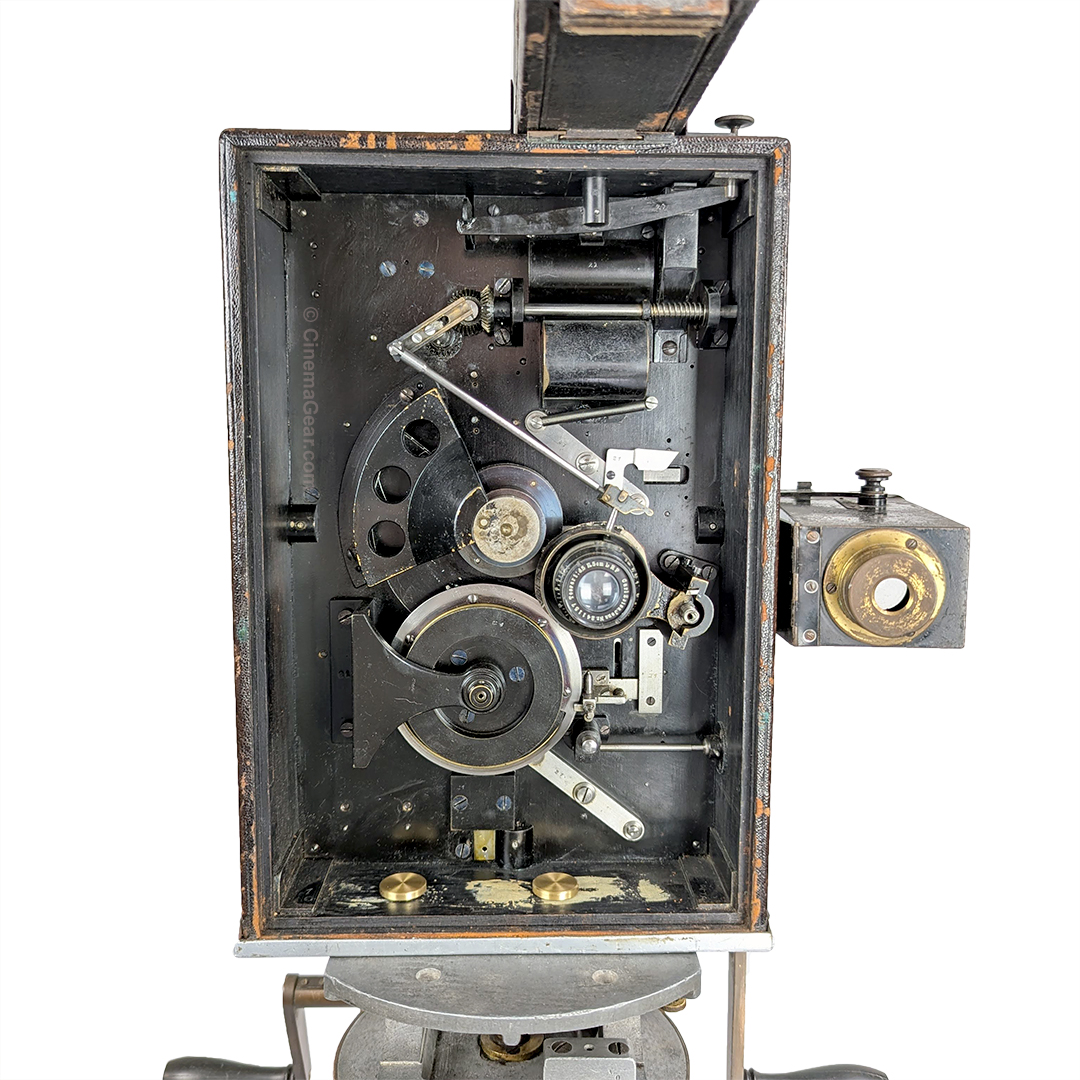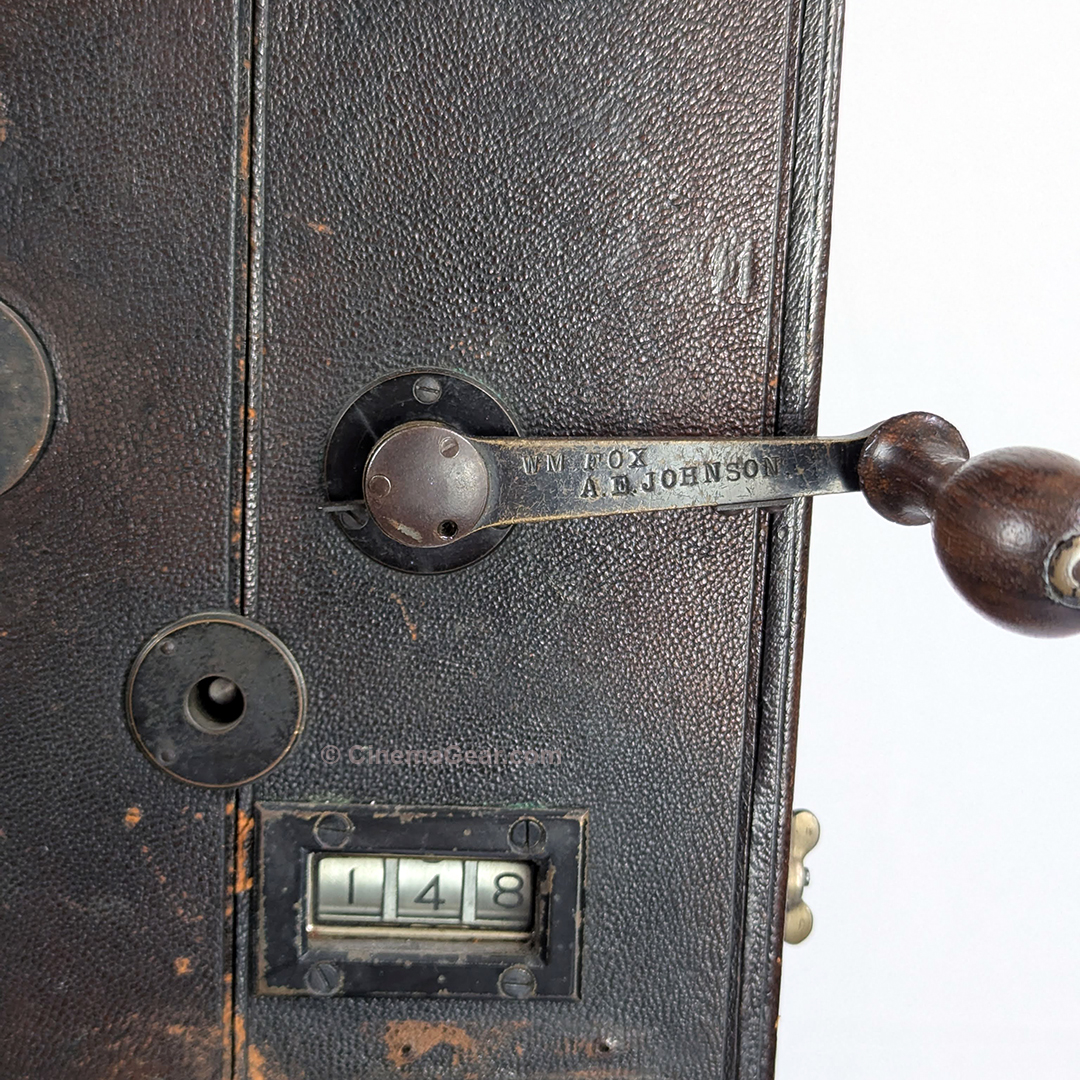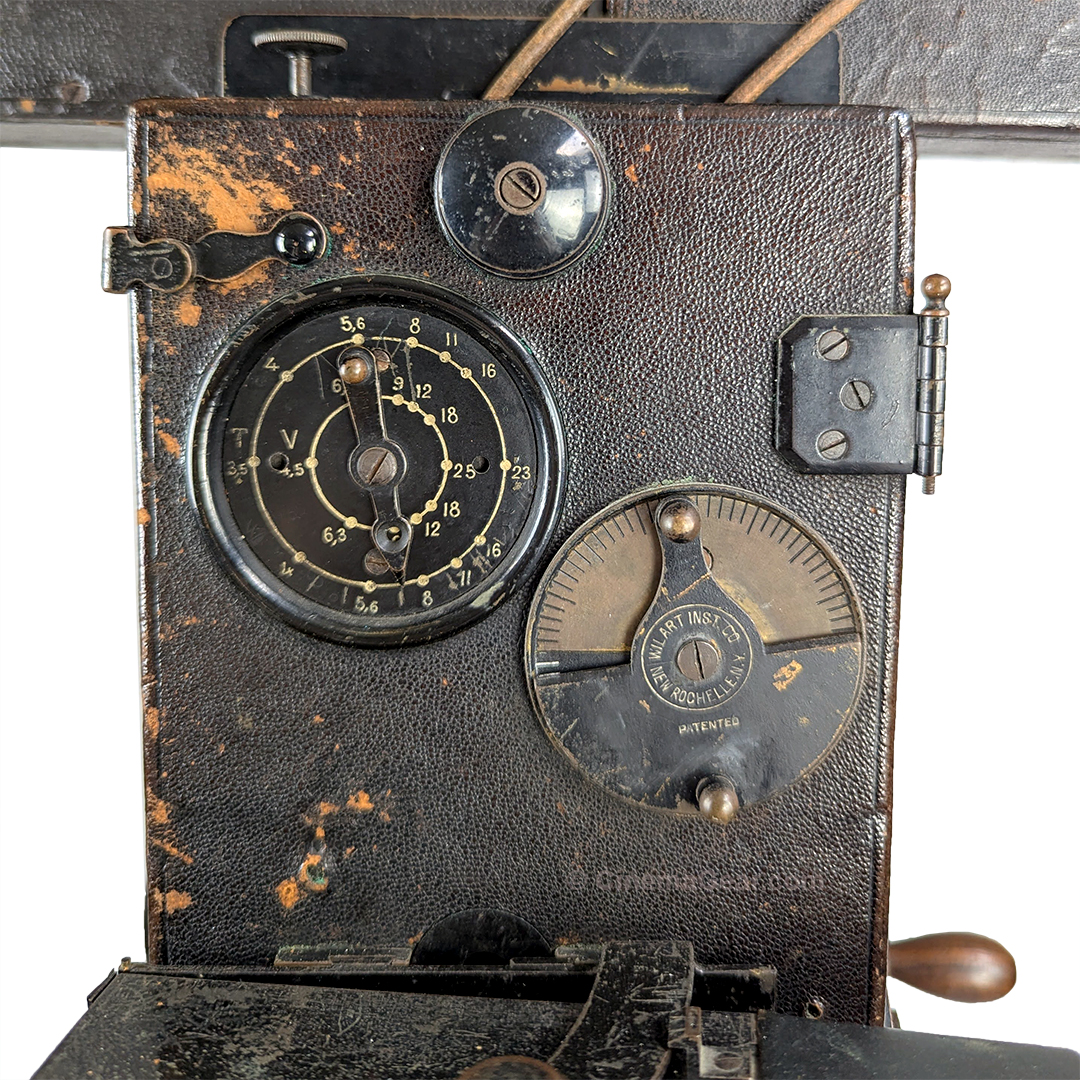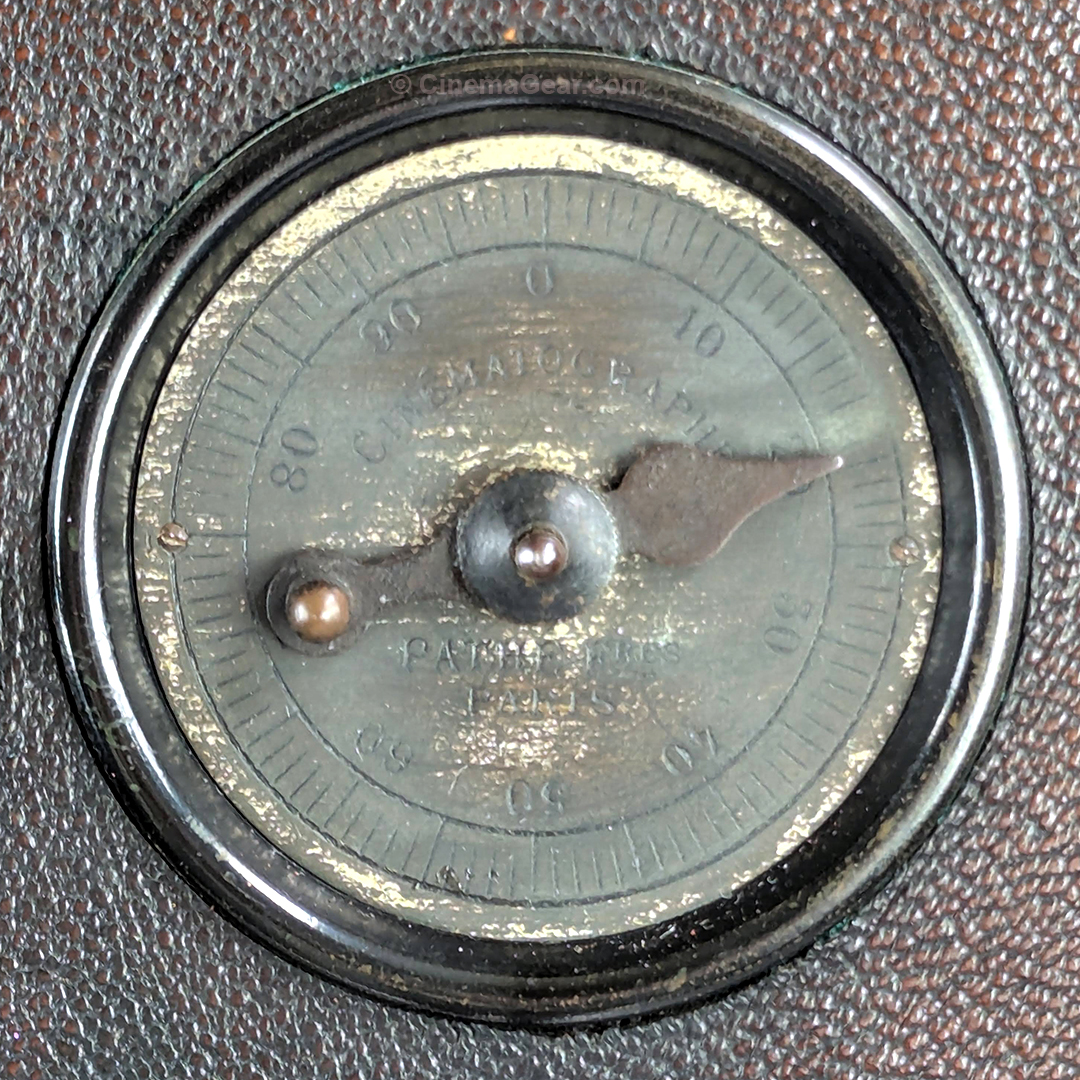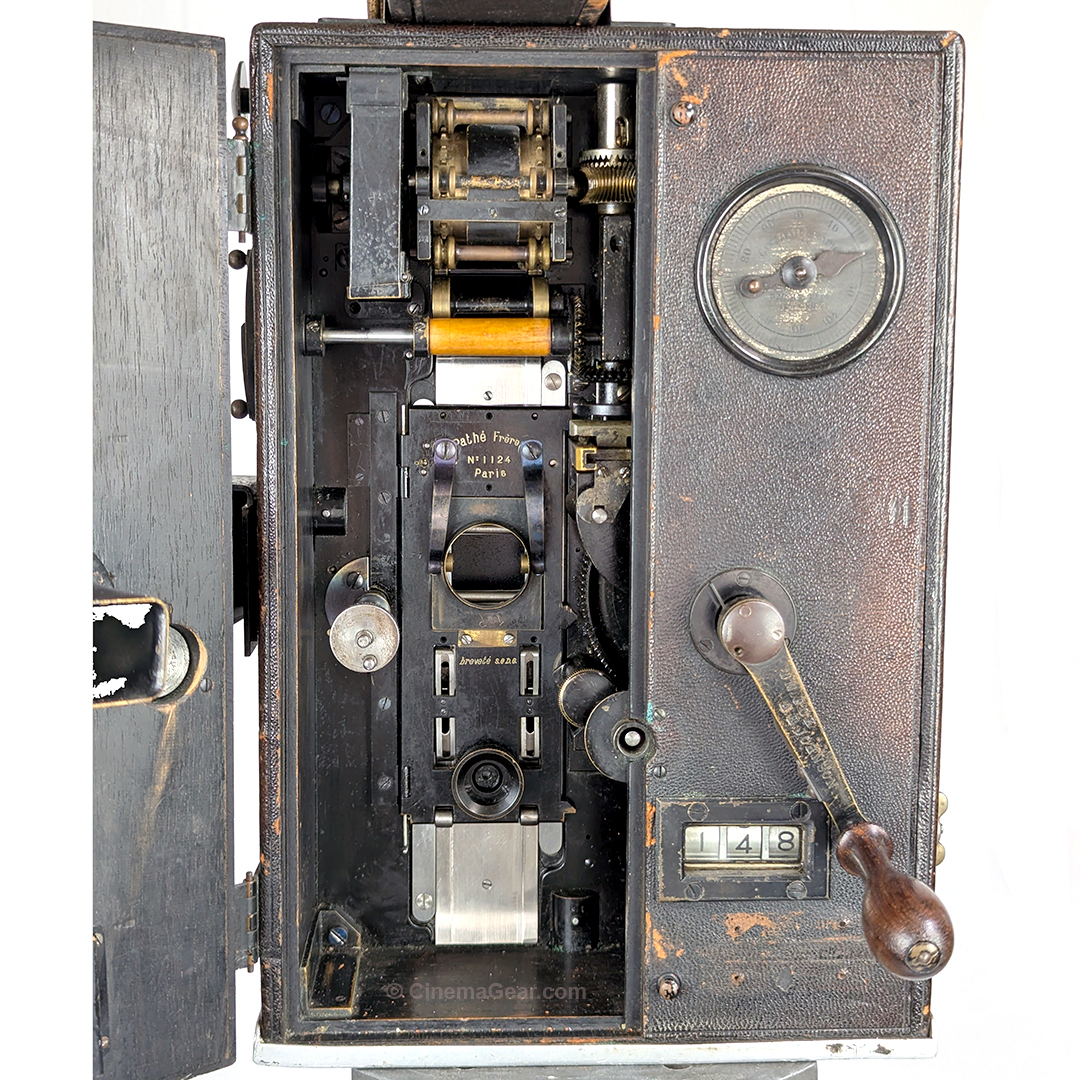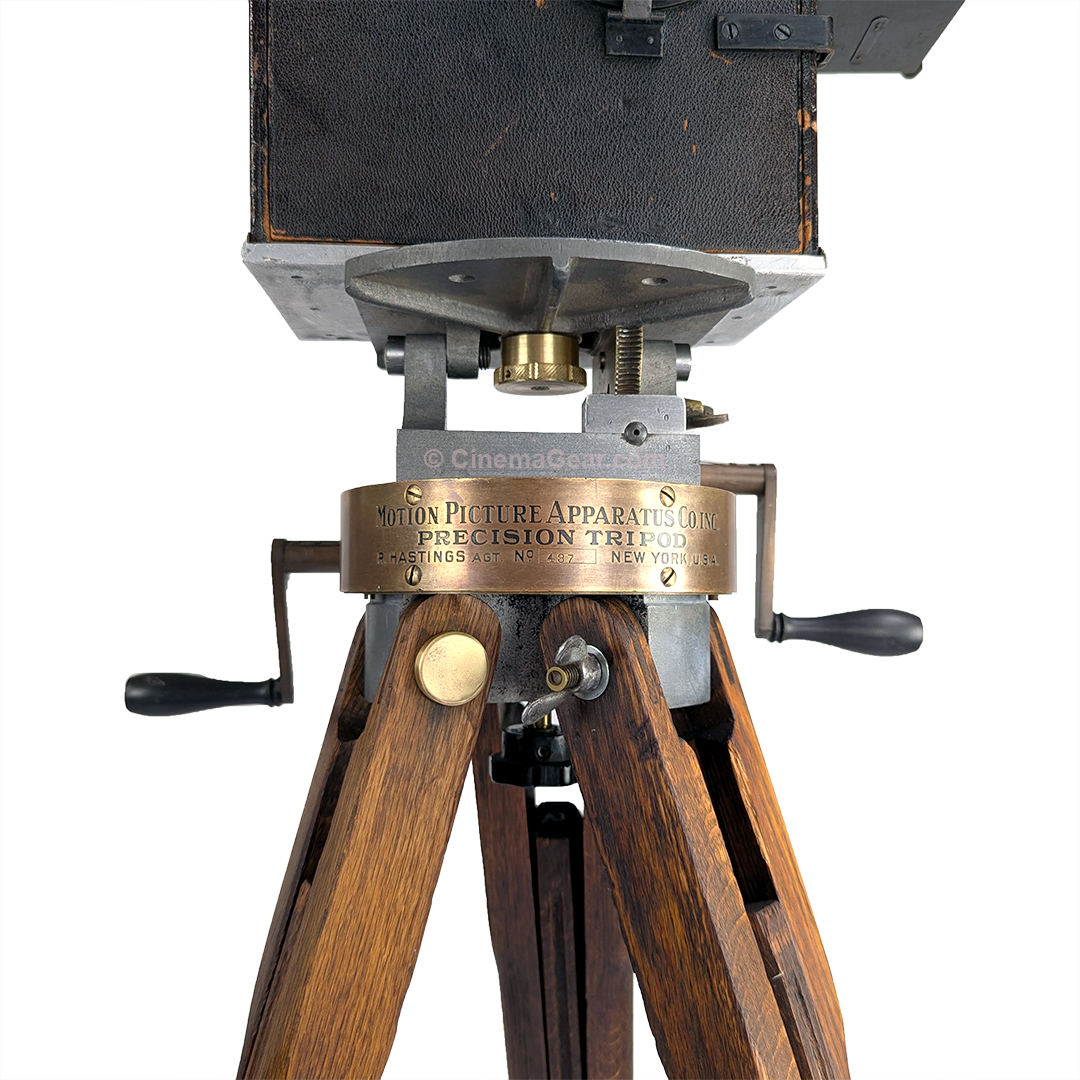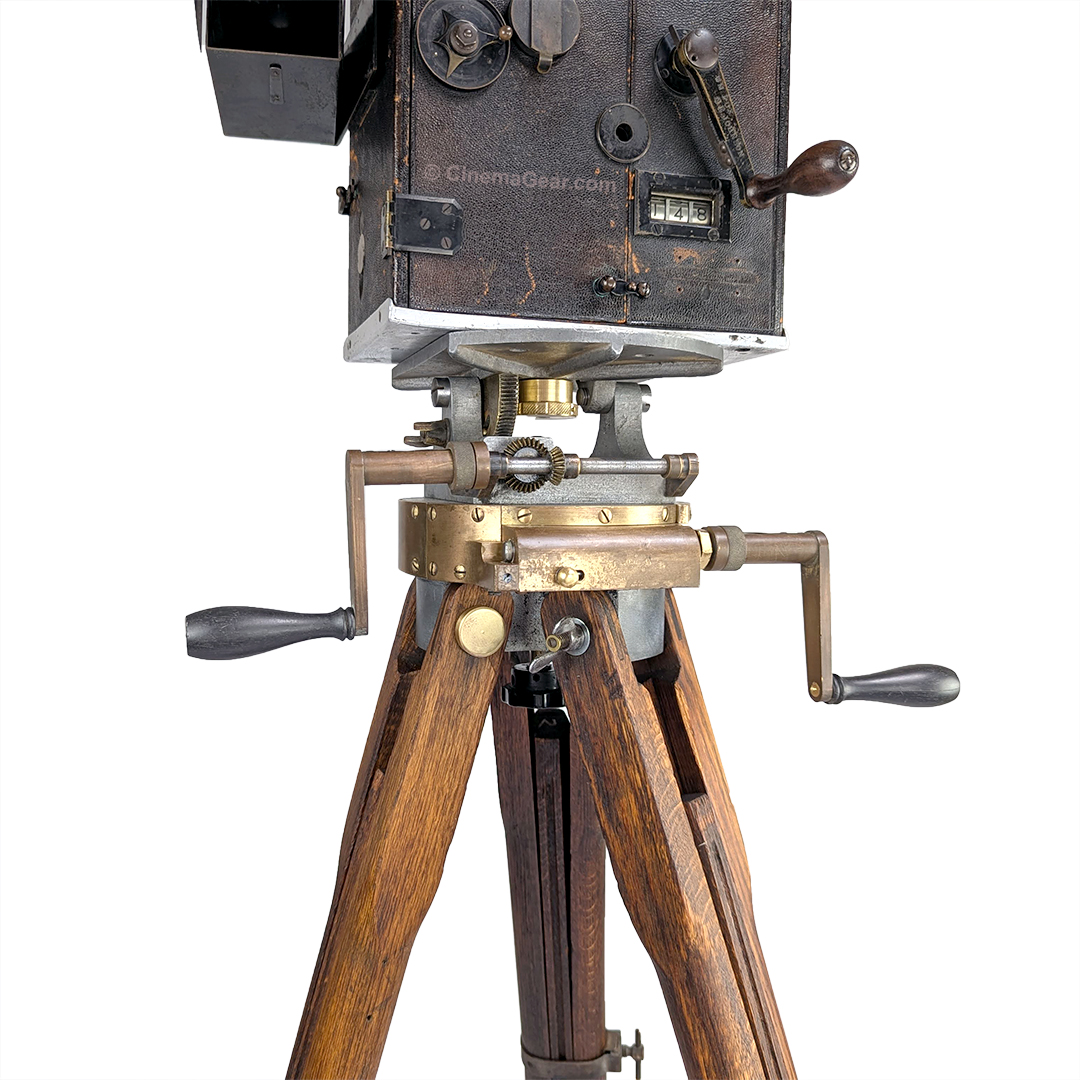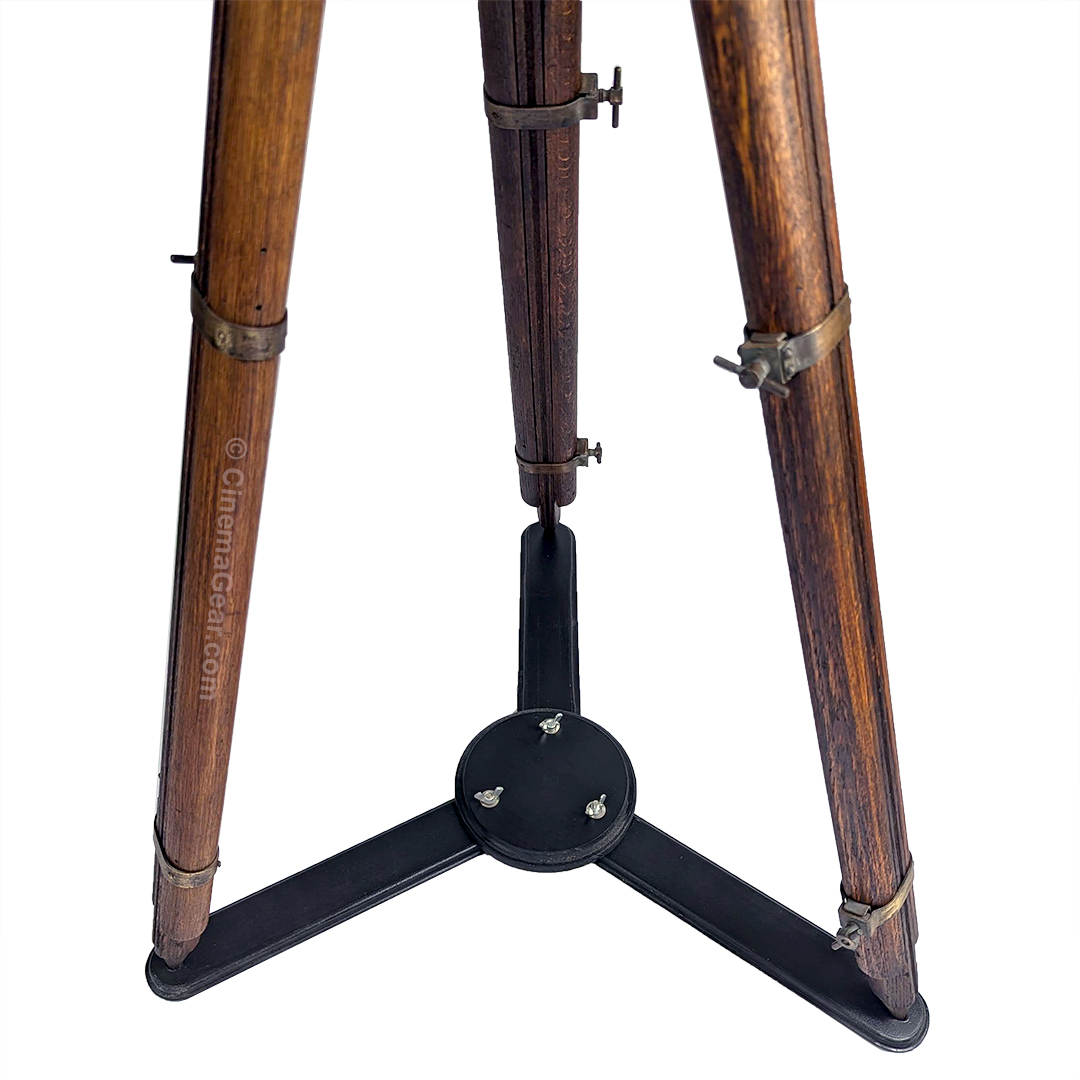
Pathé Professional Camera with Motion Picture Apparatus Company Tripod

$15,000
Item #C14561
From the infancy of the motion picture industry through the first world war, Pathé Freres, established in Paris, France in 1896 by brothers Charles, Émile, Théophile, and Jacques, was the largest producer of films and filmmaking equipment in the world. The brothers got their start in the phonograph business, and later expanded into the emerging film industry. Exactly when Pathé started making their signature camera is unclear, but we find mention of a factory for the manufacture of cinematographs and films in an 1899 article in “The Phonoscope” journal. Sources indicate that Pathé Freres acquired the patents for the Lumière brothers Cinématographe camera and commissioned the construction of what would become the world-renowned Pathé Professional Studio camera around 1907. The Pathé Professional camera was available commercially sometime in 1908 and dominated the industry until World War I severely impacted Pathé’s export market. The Pathé remained in use through the silent era, popular with industry luminaries like Billy Bitzer and Arthur C. Miller who used their cameras to shoot “The Birth of a Nation” and the popular Pathé serial “The Perils of Pauline”. A Pathé camera modified by Disney Legend Ub Iwerks in 1924 was part of the production of the successful early Walt Disney Alice Comedies. The wooden Pathé camera slowly fell out of favor as the all-metal Bell & Howell 2709 and other, more rugged cameras found favor with cinematographers worldwide. Still, the legacy of the Pathé camera remains as it contributed so much to the early art and history of filmmaking across the globe. Pathé continues today as the second oldest operating film firm in the world, running theaters across Europe, producing films, and operating a foundation dedicated to preserving the historical heritage of the Pathé company.
In late 2024 I was absolutely thrilled when a client entrusted this Pathé camera into my care for restoration and to find it a new, permanent home. The camera was rescued from a building that was scheduled to be demolished, and where it was being stored, oddly, in a shower stall. When the camera arrived, it was in surprisingly good shape for a camera that is around 110 years old, and the way in which it had been stored. As I began to more closely assess the condition of the camera, I was impressed by the incredible engineering and amazing forethought that this camera represents. The Pathé camera is housed in a wooden case with brass fittings and black leather accents. This particular unit incorporates a variable shutter, automatic fade, remote focus control, remote f-stop control, an added 3-digit mechanical counter, and a footage dial. In addition, the camera includes a parallax adjustable finder, and an eyepiece for critical focusing through the film, a pair of top mounted 400’ wooden film magazines, a Carl Zeiss Jena Tessar 5cm f3.5 lens, and an original hand crank. Interestingly, the hand crank is stamped “WM Fox” and “AE Johnson”.
I began the restoration process by cleaning (not polishing) the many brass pieces on the camera that had oxidized with age. I oiled all of the cams and moving bits, and lightly greased the gears. Because I didn’t want to disassemble the camera unnecessarily, the most difficult thing was getting to all the gears, bearings, and cams through the wooden housing. That being accomplished, I was able to crank the camera for the first time and was even further amazed at how smooth this camera runs. According to the historical descriptions of the Pathé camera I found, these cameras originally used a spring belt. All of the spring belts I have in stock were too large in diameter, so I made a leather magazine drive belt for the camera. As for the parallax adjustable sidefinder, there were a few places where the brass sheet metal had come free from the main body, so those areas were repaired, the lens was cleaned, and everything was put back together. It looks to me like there is a ground glass missing from the sidefinder, but I am not sure what that looks like just yet.
When it arrived, this camera had two mysterious holes in the bottom of the camera box that went all the way through. I don’t know what these were for, but they would be a problem if I were to try to shoot film with this camera. Keeping with my goal of not modifying the equipment further, I made a pair of simple brass plugs to fill these holes and keep the inside of the camera light tight. If I discover what the holes were for, the plugs are easily removable. And with that, the restoration work on the camera was complete. The last step before I could run film through the camera was to make two wooden film core adapters for the magazines so that I could use modern plastic film cores. After a few measurements and a quick trip to the hardware store, I created two wooden rollers that fit on the stock magazine axles, and were the correct size to hold a modern film core. Success! Then it was finally time to crank the Pathé camera with film and get it all ready for its new home. We estimate that this camera was made sometime around 1915, so it seemed a perfect match for a similar vintage tripod made by the Motion Picture Apparatus Company. The camera is now complete and ready to find a new, loving home!

